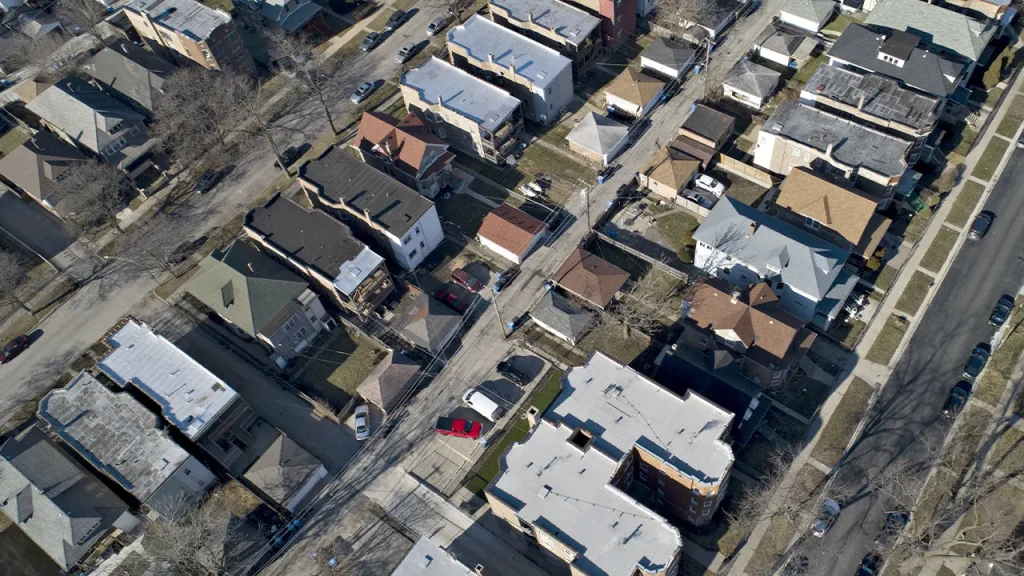Chicago Homeowners Struggle with Rising Property Taxes While Seeing Few Community Improvements
In the heart of Chicago’s West Side, residents of Lawndale are feeling the sting of rising property taxes without witnessing corresponding improvements in their neighborhood. Lifelong resident Milton Clayton expressed a sentiment shared by many in his community: “There’s been a divestment in this community for the most part but it seems like, now that people have found an interest in reclaiming the neighborhood, now it’s like we’re being taxed for prosperity.” This frustration encapsulates a growing disconnect between what Chicago homeowners are paying and what they’re receiving in return. For many residents, each tax bill brings renewed questions about where their money is actually going, especially when they look around and see neglected streets, underfunded schools, and limited economic development in their immediate surroundings.
The impact of these increases is far from abstract. Thomas Worthy, another Lawndale resident, recently received a property tax bill that was nearly $1,000 higher than his previous year’s assessment. His bill included charges related to a TIF (Tax Increment Financing) district, a funding mechanism that allocates increased property tax revenue within designated areas toward local redevelopment projects. However, Worthy and his neighbors remain confused about how these TIF funds benefit their specific community. “We understand utilities are going up and things of that nature, but it’s a valuation issue,” Worthy explained. “We don’t have the schools we need. It’s economics that are not here, but we’re being charged to pay for economics in other people’s communities.” This perception—that their tax dollars are flowing outward rather than circulating back into neighborhood improvements—has deepened residents’ frustration with the system.
The situation in Lawndale reflects broader tax challenges facing Chicagoans and Illinois residents as a whole. According to the Illinois Policy Institute, a nonpartisan research organization, Illinois homeowners endure the second-highest property tax rates in the nation, paying approximately 2.07% of their property’s value annually—more than double the national average. Cook County’s tax burden is particularly severe, ranking among the nation’s 100 most expensive counties for property taxes in 2022. More than half of a Chicago homeowner’s property tax payment goes directly to Chicago Public Schools, yet many residents in areas like Lawndale question whether their local schools receive adequate funding despite these contributions. This apparent disconnect between tax payments and visible educational improvements has become a focal point of community concern.
The city’s approach to managing these tax revenues has drawn increasing scrutiny, particularly regarding Mayor Brandon Johnson’s recent proposal to extract a record $1 billion from TIF districts to balance his $16 billion 2026 budget. This plan would pull funds from 68 of Chicago’s 108 TIF districts, including several in already underserved South and West Side communities. While supporters argue this strategy would strengthen city finances and increase school funding, many City Council members have expressed concerns about potential delays in neighborhood improvements that have long been promised to these communities. For residents already questioning the value they receive from their tax dollars, the prospect of further diverting funds from local development projects only intensifies their frustration with the system.
The property tax burden’s weight falls particularly hard on communities like Lawndale, where many residents feel they’re financing prosperity elsewhere while their own neighborhoods remain overlooked. This perception of inequitable distribution is especially painful in historically disinvested areas that have waited generations for meaningful economic development. When residents look at their increasing tax bills alongside stagnant neighborhood conditions, they see not just a financial burden but a fundamental unfairness in how public resources are allocated. The situation creates a troubling cycle: as property values increase (often due to external market factors rather than actual neighborhood improvements), residents face higher tax bills without seeing proportional enhancements to their quality of life or community infrastructure.
Despite these challenges, there are some options available for struggling homeowners. At a recent Chicago Rainbow PUSH Coalition event, Cook County Treasurer Maria Pappas informed residents about available payment plans extending up to 13 months. “You do not have to pay your bill on December 15,” Pappas clarified. “We went to Springfield last year and set up a payment plan.” While such measures provide temporary relief, they address symptoms rather than root causes of Chicago’s property tax issues. The fundamental questions raised by Lawndale residents remain unanswered: Why do tax bills continue to climb when neighborhood improvements remain elusive? How can the system be reformed to ensure communities directly benefit from their contributions? As Chicago officials navigate budget challenges and TIF allocations, addressing these questions will be essential to rebuilding trust with residents who increasingly feel they’re paying more while receiving less.








